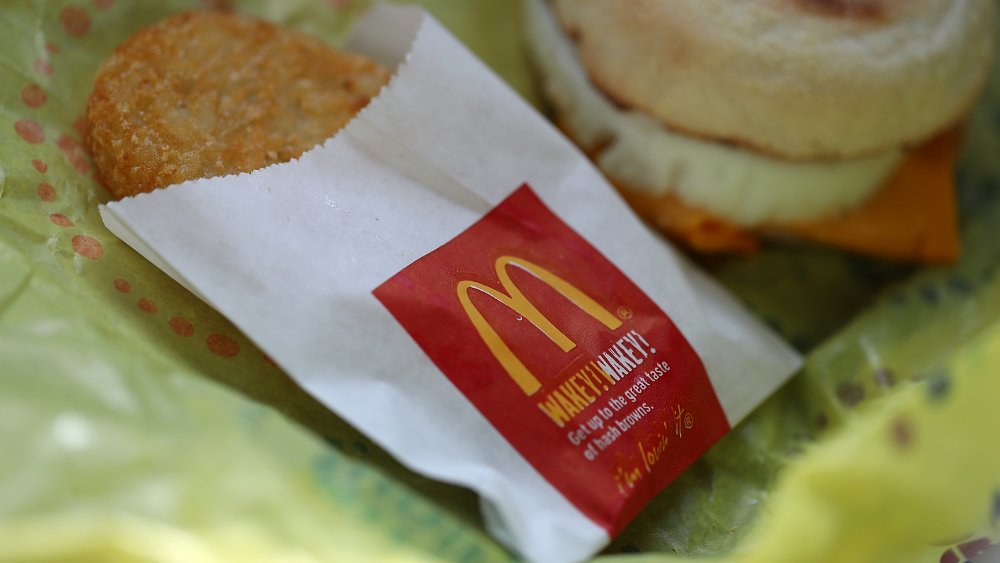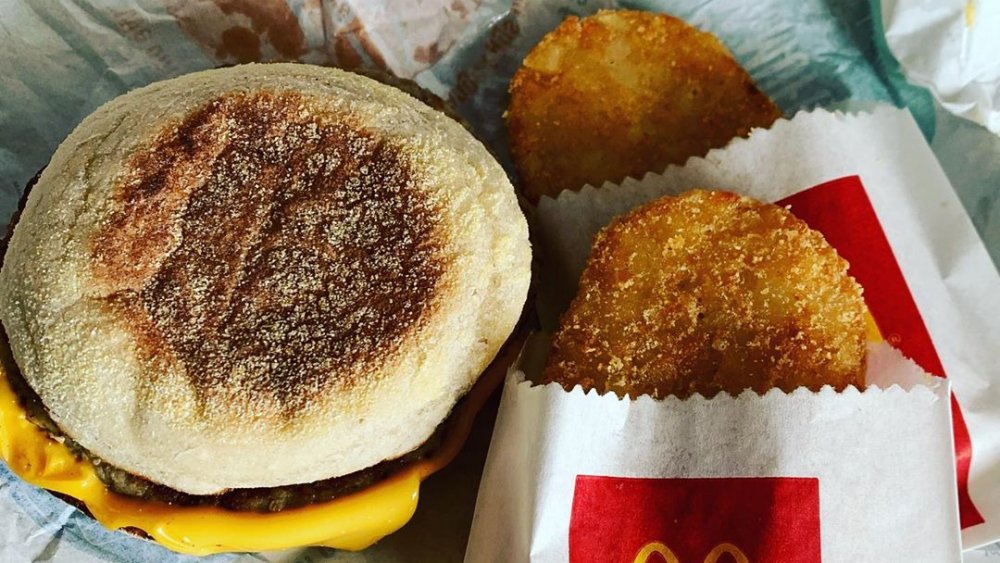This Is What Makes Your McDonald's Hash Browns Taste So Good
Sometimes, only a McDonald's will do. Whether you're exhausted, hungover, on a road trip, or just simply craving something deliciously greasy, that incomparable taste is the only thing that will truly satiate your hunger. Consider the fact that, following the reopening of certain branches of the chain restaurant in New Zealand, the U.K., and Ireland after coronavirus measures were relaxed, lines formed around the block just to get a sniff of that sweet McDonald's nectar. Meanwhile, in the U.S., the surge of customers trying to get their hands on a Big Mac led to an increase in cases, resulting in a forced delay in reopening proper.
For anybody lining up overnight to get in (really), the world-famous McDonald's breakfast was likely all they had on their minds, the most crucial component of which is their delectable hash browns. Magically crispy on the outside yet soft and fluffy on the inside, they're worlds above any other variety offered elsewhere. So, how do they manage to make them so darn tasty?
The secret to McDonald's hash browns is in the oil
The secret, as Better Homes & Gardens reveals, is the oil used to fry the hash browns. Originally, McDonald's were frying their hash browns (and French fries) in a mixture of cottonseed oil and beef tallow which, because it's a rendered fat, is majorly unhealthy and makes whatever was fried in it extremely high in saturated fat.
While trying to make their products somewhat healthier, in line with changing times, McDonald's began frying them in vegetable oil beginning in 1990. Then, to substitute the delicious but unhealthy beef tallow, they used natural beef flavoring. The flavoring is listed as one of the official ingredients in the fast food chain's hash browns and fries, and the change goes some way towards explaining why certain people fondly remember their fried potato sides tasting much better back in the day.
The key ingredient in McDonald's hash browns isn't vegan
Natural beef flavouring isn't vegan, because its ingredients include both hydrolyzed wheat and hydrolyzed milk, but it is actually vegetarian. As food chemist Gary Reineccius explained to Eater, natural beef flavoring doesn't necessarily come from beef. Rather, "The flavor in beef is created during the cooking process." As Reineccius advised, the process of creating it came from intrepid scientists looking to bottle that flavor on the cheap.
"Food scientists identified the amino acids found in beef, added some very common sugars — starch hydrolysate — put it in a pot, added some citric acid to drop the pH, controlled moisture content, and heated it to the same temperature as meat. Then ... *poof* we have meat flavor," he advised. It might sound kind of disgusting, particularly if you're a non-meat eater, but when the end product tastes as good as McDonald's hash browns, we're not sure we care.


